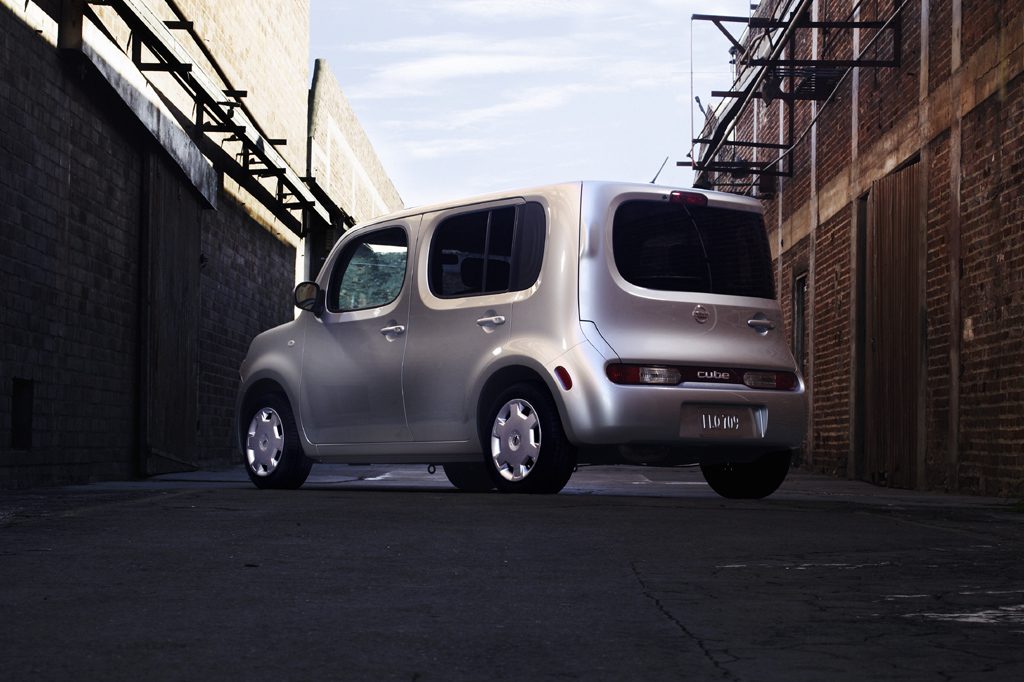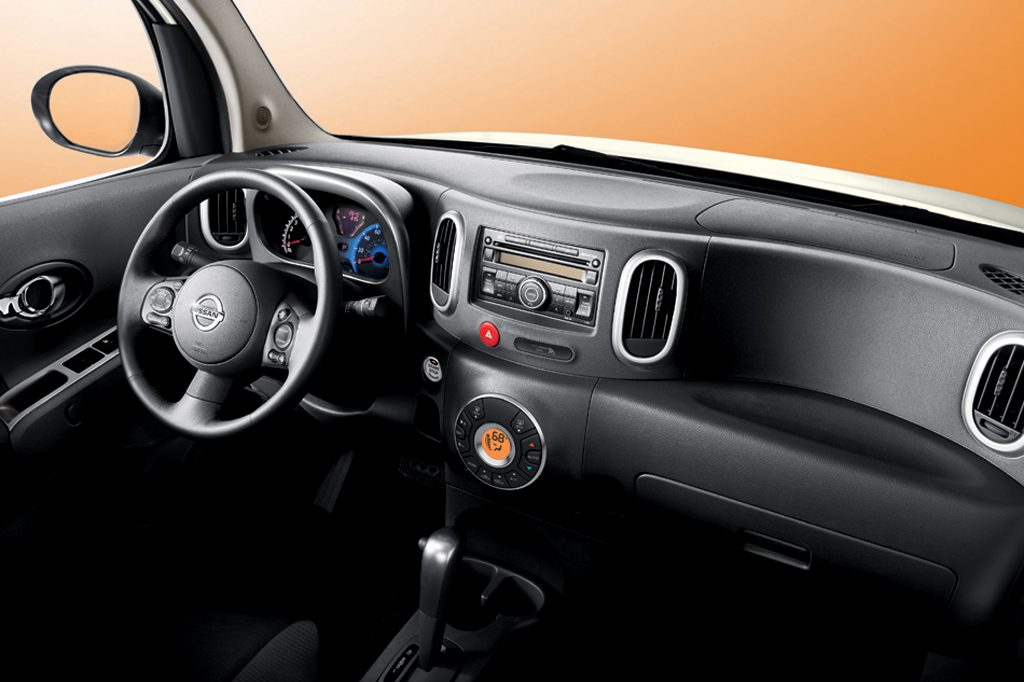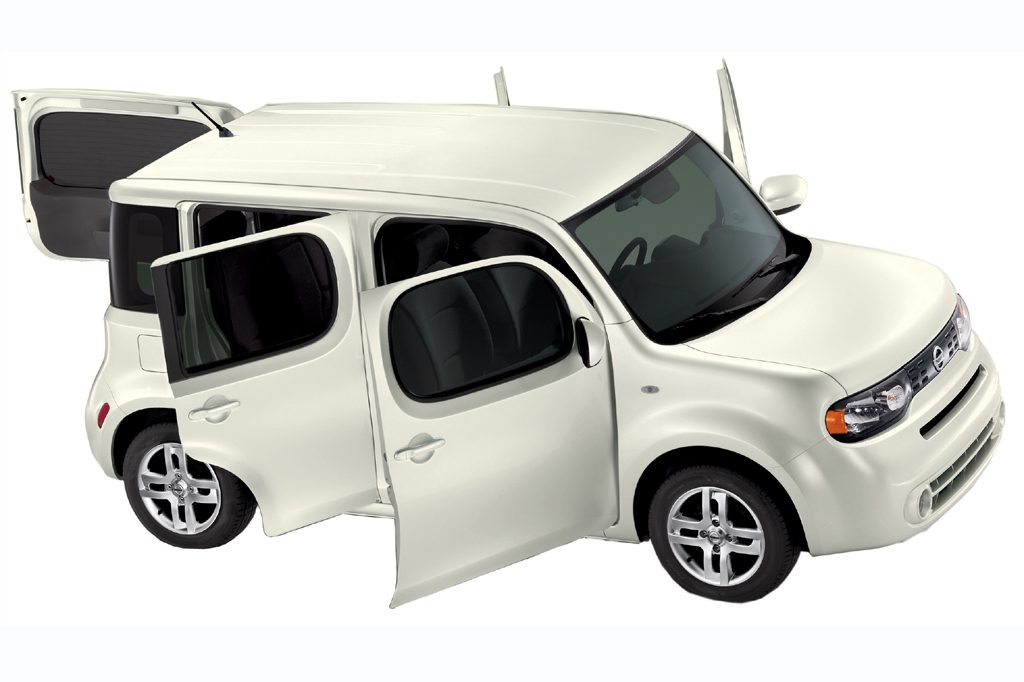| Subcompact car; Built in Japan |
|
|
| Good condition price range: $4,700 – $16,900* |

2009 Nissan Cube Front

2009 Nissan Cube Rear

2009 Nissan Cube Interior

2009 Nissan Cube Exterior
| Pros: |
|
| Cons: |
|
Nissan’s Cube offers a surprising amount of space and practicality in a small and highly styled package. People shopping for small crossover-type sport-utility vehicles, and outgoing folk looking for something beyond the ordinary subcompact universe, should give Nissan’s personality-infused little box a close look and trial run. Anyone with mobility problems also will find that the Cube offers amazingly easy entry and exiting.
Overview
Introduced late in the 2009 model year, the squared-off Cube was a subcompact four-door wagon with a swing-out back door and front-wheel drive. As the newest addition to this Japanese automaker’s lineup, the Cube came in four trim levels: 1.8, 1.8 S, 1.8 SL, and top-of-the-line Krom. The sole engine was a 122-horsepower 1.8-liter four-cylinder, borrowed from Nissan’s compact Versa. Two transmission choices were offered: a six-speed manual or a continuously variable automatic transmission (CVT). The base model and the S came standard with the manual gearbox. The CVT was available on the S model, but was the only transmission offered on SL and Krom editions.
Standard safety features included antilock brakes, traction control, an antiskid system, curtain side airbags, and front side airbags. Cube’s rear seat was positioned slightly higher than in other subcompact cars, and it was able to slide back and forth to accommodate passengers or cargo. The S model included cruise control and a cargo-area cover. SL equipment added 16-inch alloy wheels and automatic temperature control. A Preferred Package that included rear-obstacle detection, keyless access and engine start, and a wireless cell-phone link was optional on the SL. That Package was standard on the Krom edition, which also included an uplevel sound system and a rear spoiler. Though Nissan’s Cube was a highly distinctive and unique vehicle, it competed against such subcompacts as the Honda Fit, Scion xB and xD, and Suzuki SX4.
Yearly Updates
| 2010 Cube Auxiliary audio controls on the steering wheel became standard this year on S and SL models, rather than optional. A wireless cell-phone link now was standard on SL and Krom models. A 4.3-inch audio display with USB connectivity and a RearView Monitor were added to the optional SL Preferred Package, and to the Krom edition. New S-model equipment included a Radio Data System and speed-sensitive volume control, as well as MP3/CD-ROM playback capability. |
| 2011 Cube The 2011 Nissan Cube was largely unchanged. |
| 2012 Cube There were no changes of note to the 2012 Nissan Cube. |
| 2013 Cube Cube carried over with virtually no changes for 2013, save for the cancellation of the entry-level model and discontinuation of the Cargo Version package and Indigo Limited Edition trim package. |
| 2014 Cube There were no significant changes for the 2014 Cube. |
